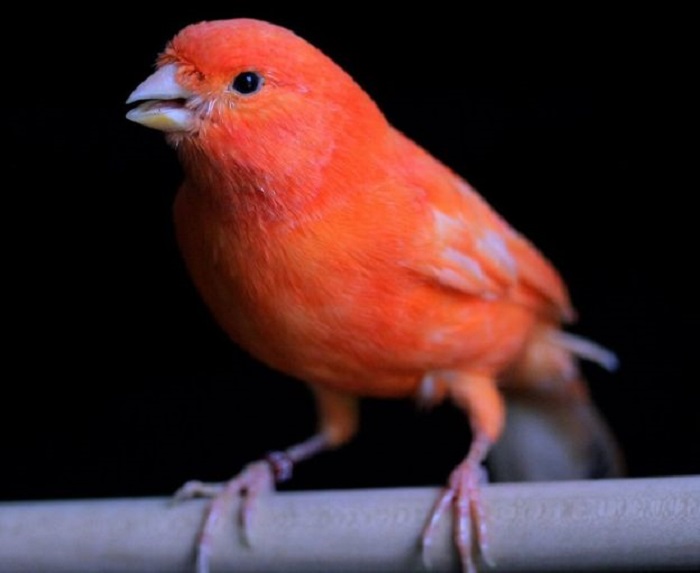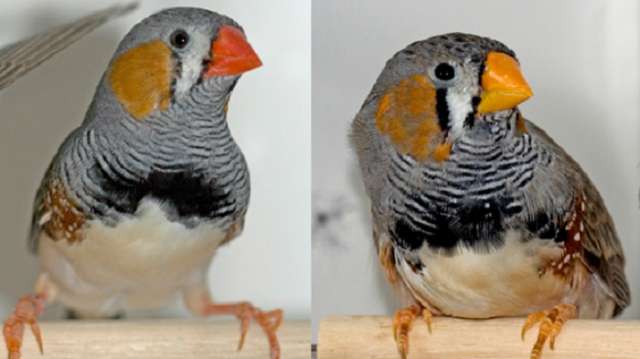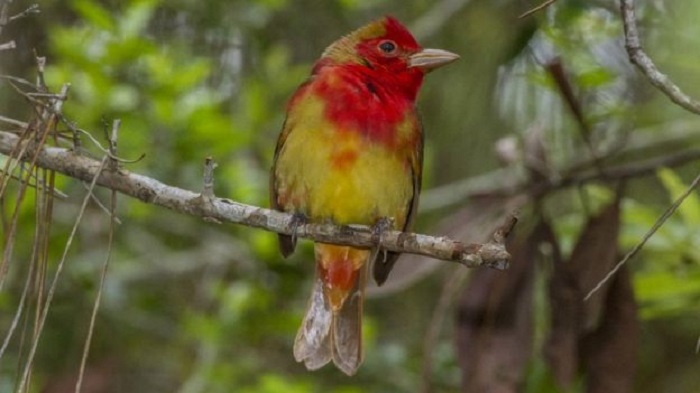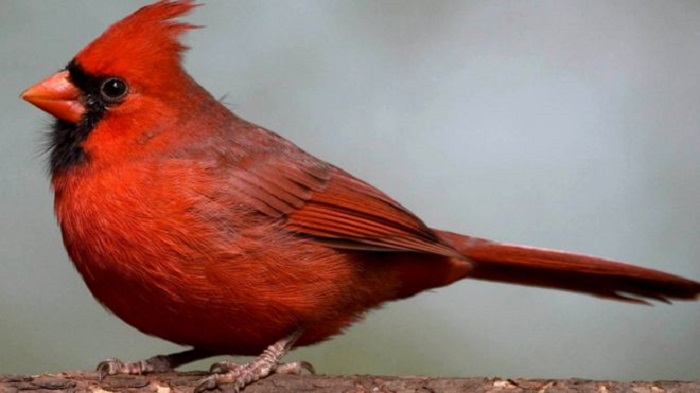Two separate teams made the discovery, by examining the DNA of birds which either gained or lost their redness.
One focussed on a finch which sometimes loses its red beak; the other on a type of canary bred to be entirely red.
Both studies are published in the journal Current Biology.
"Birds cannot synthesise these red pigments endogenously. They have to obtain them from their diet," Dr Miguel Carneiro from the Universidade do Porto, Portugal, told BBC News.
"It was known for a long time that an enzymatic conversion is needed to produce the red pigments. So many groups of geneticists and physiologists, for many decades, have tried to identify the enzyme that does this conversion."
Dr Carneiro and his colleagues began their search with the "red factor" canary - a popular pet that originated in the 1920s, when bird fanciers crossed common, yellow canaries with the vibrant South American red siskin.
"Some people consider it to be the first genetically engineered species," Dr Carneiro said.

"By a number of crosses, throughout many generations, they fixed the ability to convert yellow pigments into red pigments, in some breeds of canary.
"What we did… is try to look at sections of the genome in red factor breeds that actually belong to the red siskin - and that`s how we got to the gene."
Dyes and drugs
The gene his team singled out, called CYP2J19, encodes an enzyme belonging to the "cytochrome P450" family of proteins.
It is precisely the same gene that a different group settled on, at almost exactly the same time, led by Dr Nicholas Mundy at the University of Cambridge, UK.
"There`s a large family of cytochrome P450s and they`re best known because they are the genes that metabolise most medicines in the body," Dr Mundy said. "Most of them are expressed in the liver."

He and his colleagues came across a small cluster of these genes on a chromosome of the zebra finch. This cluster was strongly linked, when they studied a pedigree of 95 birds, with the finches having yellow beaks instead of the usual red.
Eventually, they figured out that all "yellowbeak" birds - a mutated strain that breeders know and use to combine with other attractive traits - had a small section of DNA deleted, containing the gene CYP2J19.
One up, one down
Important implications arise from the joint discovery, according to Dr Carneiro.
"The fact that we identified the same gene in two deeply divergent species suggests that this is likely to be very general in the bird world, and many species will use the same mechanism to produce red pigments."
Dr Mundy agreed, noting that there was a particular elegance in the fact that each team had approached the gene from a different direction.

"We were studying a loss-of-function mutation, going from red to yellow, whereas they were studying a gain-of-function mutation: canaries aren`t normally red, and they`d gained a mutation from another species," he told the BBC.
"In science… to demonstrate that a gene, a protein, whatever it is, is involved in something, you want to show that it is both necessary - it`s required for that thing to happen - and also that it`s sufficient, which means that it, on its own, can do the job.
"Here, we`ve shown that the gene is necessary, and they`ve shown that it`s sufficient."
More about:
















































